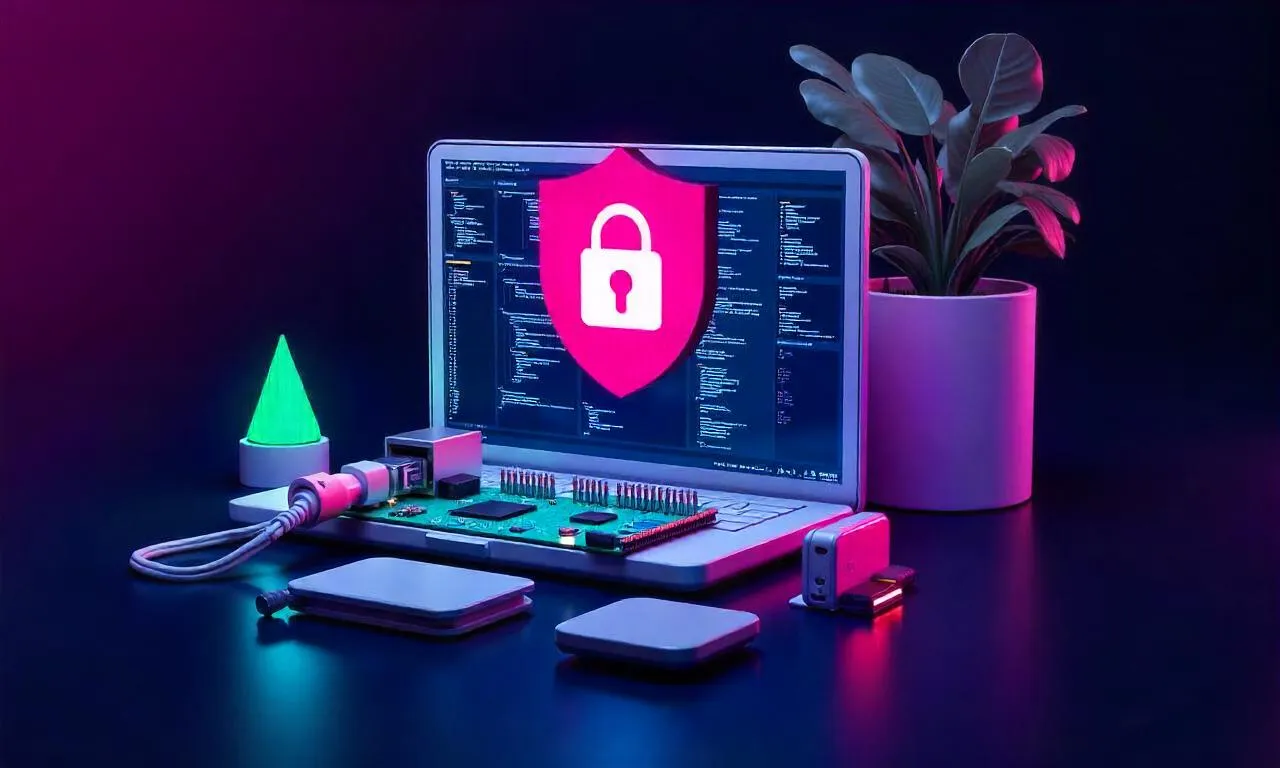In today’s digital age, where online privacy and security are paramount, VPN kill switch technology has become a critical component for users who want to protect their sensitive data. Whether you’re browsing the internet from a public Wi-Fi hotspot or using your mobile network, a kill switch acts as a safety net, ensuring that your connection to the internet is always secure. The question what is a vpn kill switch often comes up among users who are new to virtual private networks (VPNs) and want to understand how this feature safeguards their online activities. A kill switch automatically disconnects your device from the internet if the VPN connection drops, preventing your real IP address from being exposed and minimizing the risk of data leaks.
This guide will explore the concept of a VPN kill switch, its importance, how it works, and its types. We’ll also provide practical tips on enabling and using it effectively, along with a comparison of different kill switch features. Whether you’re a casual internet user or a privacy-conscious individual, understanding what is a vpn kill switch can help you make informed decisions about your online security.
Table of Contents
ToggleUnderstanding the Concept of a VPN Kill Switch
A VPN kill switch is a security feature designed to automatically cut off your internet connection if theVPN service fails. This ensures that your data isn’t transmitted over an unsecured network, even if you’re unaware of the outage. When you activate a kill switch, it monitors your connection in real-time. If theVPN drops, the kill switch immediately blocks all internet traffic, redirecting it to a secure or offline state.
The primary purpose of a kill switch is to prevent data exposure. Without it, your internet traffic could be routed through your ISP or a public network, revealing your real IP address and location. This makes it a must-have for users who prioritize anonymity and data protection, especially when accessing sensitive information or communicating over untrusted networks.
For example, if you’re using a VPN to access banking websites or send confidential emails, a kill switch ensures that your connection remains encrypted. If theVPN disconnects, your data is no longer at risk, and you’re immediately alerted to take action. This feature is particularly important for users who rely on real-time security and can’t afford even a brief lapse in protection.
How a VPN Kill Switch Works
A VPN kill switch operates by continuously monitoring the connection between your device and theVPN server. It works in the background, ensuring that your internet traffic remains secure at all times. The kill switch is typically enabled as part of theVPN service’s settings, and it works across all devices connected to the same network.
When theVPN connection drops, the kill switch detects the loss of the secure tunnel and triggers an immediate response. This could involve disconnecting your device from the internet entirely, or switching to a different connection method, such as a wired network, if available. The process is automatic, meaning you don’t need to manually intervene to protect your data.
One of the key advantages of a kill switch is its ability to prevent accidental data leaks. For instance, if you’re streaming content on a free public Wi-Fi network and theVPN disconnects, your IP address and browsing activity could be exposed. A kill switch ensures that you’re instantly cut off from the internet until theVPN connection is restored, preventing any sensitive information from being shared.
Types of Kill Switches
There are two main types of kill switches in the realm of VPN technology: application-level kill switches and network-level kill switches. Each type has its own mechanism and benefits, depending on the user’s needs and preferences.
Application-Level Kill Switch
An application-level kill switch blocks specific apps or services from accessing the internet if theVPN connection fails. This type is ideal for users who want to ensure only certain applications are protected, such as messaging apps, email clients, or banking software. It allows other apps, like web browsers, to remain connected to the internet if theVPN is down.
For example, if you’re using a free Wi-Fi network to check your email but theVPN connection drops, an application-level kill switch would prevent your email app from sending or receiving data. However, it might still allow you to browse the web or stream videos. This gives users more control over which services are secured.
Network-Level Kill Switch
A network-level kill switch is more comprehensive. It disconnects all internet traffic from your device when theVPN fails, ensuring no data is sent over an unsecured connection. This type is better for users who want maximum security and are less concerned about specific apps being blocked.
The main difference between these two types is the scope of protection. While an application-level kill switch allows partial connectivity, a network-level kill switch ensures complete isolation. This makes the latter more suitable for high-security environments, such as corporate networks or when handling confidential information.
Choosing the Right Kill Switch for Your Needs
The choice between application-level and network-level kill switches depends on your privacy requirements and usage patterns. If you frequently use multiple apps and want to keep your network active while some apps remain protected, an application-level switch might be ideal. On the other hand, if you prefer no data leaks at all, even if theVPN connection drops, a network-level kill switch is the best option.
Both types can be found in premium VPN services, but some free options may offer only limited support. It’s essential to check the features of your chosenVPN to determine which type of kill switch it provides. Additionally, some services offer combination kill switches, which blend the benefits of both approaches for enhanced security.
The Importance of a VPN Kill Switch
A VPN kill switch plays a crucial role in safeguarding online privacy and data security. Without this feature, users risk exposing their real IP address and location if theVPN connection fails. This can lead to unintended data leaks, especially when accessing sensitive information like banking details or personal communications.
For instance, imagine you’re on a public Wi-Fi network at a coffee shop and using yourVPN to access your online accounts. If theVPN connection drops due to server downtime or internet instability, your data could be intercepted by hackers or third parties. A kill switch ensures that your internet traffic is cut off immediately, preventing any exposure of your data. This is particularly important for users who prioritize online anonymity and secure browsing.
Another scenario where a kill switch is vital is when using a mobile hotspot or satellite internet. These connections can be unstable or slow, and a sudden drop in VPN performance might leave your device vulnerable. A kill switch acts as a shield, ensuring that your data remains encrypted and protected until theVPN is reestablished.
Preventing Data Exposure in Real-Time
A VPN kill switch is designed to respond instantly to connection failures, making it an effective tool for real-time data protection. It prevents your real IP address from being exposed, which is a common risk when using unsecured networks. This is especially important for users who access sensitive information regularly, such as health records or business emails.
The kill switch also helps in maintaining consistent security. For example, if you’re streaming content on a free VPN service and the connection drops, the kill switch ensures that your data isn’t sent over an unencrypted channel. This is a critical feature for users who rely on encrypted communication and can’t afford even a brief lapse in security.
Moreover, a kill switch enhances user confidence in using VPN services. Knowing that your data is protected automatically gives you peace of mind, especially when switching between networks or using public Wi-Fi. It also helps in avoiding potential cyberattacks that could exploit a brief gap in your connection.
How to Enable a VPN Kill Switch
Enabling a VPN kill switch is typically a simple process that can be done through yourVPN service’s settings. Most modern premium VPN services offer this feature as a default option, while some free providers may require you to enable it manually. The exact steps may vary slightly depending on the VPN provider and the device you're using, but the general process is similar across platforms.
On Windows devices, you can enable a kill switch by opening theVPN client, navigating to the settings menu, and looking for an option like “Kill Switch” or “Auto-Disconnect.” Similarly, on MacOS, you’ll find this feature in the preferences section of theVPN application. For mobile devices, such as iOS or Android, the kill switch is often enabled within theVPN app’s settings.
It’s also important to check the kill switch's behavior when theVPN connection fails. Some services disconnect your device entirely, while others block only specific traffic. For example, a network-level kill switch will cut off all internet access, ensuring no data is transmitted over an unsecured network. An application-level kill switch, on the other hand, may restrict traffic to specific apps while allowing others to remain connected.
Once you’ve enabled the VPN kill switch, it’s essential to test it to ensure it functions correctly. A simple way to test it is by disconnecting theVPN and checking if your device is cut off from the internet or if only specific apps are blocked.
If you’re using a premiumVPN service, you can also check the kill switch settings for advanced features, such as auto-reconnect or custom rules. These options allow you to define which apps are protected or set specific conditions for the kill switch to activate. For freeVPN services, it’s recommended to choose a provider that offers a reliable kill switch to maximize your online security.
The Benefits of Having a Kill Switch Enabled

Enabling a VPN kill switch provides peace of mind and enhanced security. It ensures that your data remains protected even during unexpected connection drops, which can happen due to server issues, network instability, or mobile signal loss. This is especially important for users who prioritize online anonymity and secure communication.
In addition to preventing data exposure, a kill switch also simplifies troubleshooting. If yourVPN connection fails, the kill switch automatically isolates your device, allowing you to reconnect without worrying about exposed data. This feature is particularly useful for users who are not tech-savvy and need an automated security solution.
Another benefit is reducing the risk of man-in-the-middle attacks. If yourVPN connection is compromised, the kill switch prevents your device from transmitting data over an unencrypted channel, making it difficult for attackers to intercept your sensitive information. This is a critical feature for users who value online security and want to protect their privacy.
Best Practices for Using a VPN Kill Switch
To maximize the effectiveness of a VPN kill switch, it’s important to follow some best practices. First, always enable the kill switch if it’s available in yourVPN service. This ensures that your data is protected even if theVPN connection fails.
Second, choose a reputableVPN provider that offers a robust kill switch. Look for services that support both application-level and network-level kill switches to customize your security. Providers with transparent policies and regular updates are also preferred, as they ensure compatibility with new network protocols and security threats.
Third, test the kill switch regularly. This helps you verify that it functions correctly in case of a connection drop. You can perform a quick test by disconnecting theVPN and checking if your internet access is blocked or if only specific apps are restricted.
Finally, combine the kill switch with other security features such as two-factor authentication and encryption protocols. This creates a multi-layered security approach, ensuring that your online activities are fully protected.
Advanced Features to Enhance Security
Some premiumVPN services offer advanced kill switch features to further enhance user security. For instance, auto-reconnect functionality allows your device to automatically restore theVPN connection once it’s reestablished, ensuring continuous protection without manual intervention.
Another advanced feature is custom kill switch rules, which let you define specific apps or services that are protected by the kill switch. This is useful for users who want to secure only certain data while allowing others to remain connected. For example, you can set the kill switch to block your email app but allow web browsing if theVPN connection fails.
Additionally, real-time monitoring is a critical aspect of a high-quality kill switch. This feature ensures that your internet traffic is continuously tracked and blocked immediately if theVPN connection drops. It’s also important to check for kill switch compatibility with different network environments, such as mobile networks, Wi-Fi hotspots, or Ethernet connections.
Common FAQs About VPN Kill Switch
Q: What is a VPN kill switch?
A: A VPN kill switch is a security feature that automatically disconnects your internet access if theVPN connection drops. It ensures that your data isn’t transmitted over an unsecured network, preventing data leaks and IP address exposure.
Q: How does a kill switch protect my privacy?
A: A kill switch protects your privacy by cutting off your internet connection when theVPN fails. This prevents your real IP address from being exposed to third parties or hackers, ensuring confidentiality of your online activities.
Q: Do all VPNs have a kill switch?
A: No, not all VPN services include a kill switch by default. Many freeVPN services may offer this feature, but it’s more common in premium providers. You should check the settings or support documentation to confirm if your chosenVPN supports a kill switch.
Q: Can I enable a kill switch on my mobile device?
A: Yes, most mobileVPN apps include a kill switch option in their settings menu. For example, on iOS or Android, you can enable the kill switch to block internet access if theVPN connection is lost.
Q: What happens if my kill switch is not enabled?
A: If the kill switch is not enabled, your data could be exposed if theVPN connection drops. This means your real IP address might be visible to others, increasing the risk of cyberattacks or data breaches.
The Role of Kill Switch in Different Network Environments
A VPN kill switch is essential in various network environments, from public Wi-Fi networks to mobile hotspots. In public Wi-Fi, where security risks are high, a kill switch ensures that your data isn’t intercepted if theVPN connection fails. Similarly, on mobile networks, where connection stability can vary, the kill switch helps prevent accidental exposure of your private information.
For users who frequently switch between networks, a kill switch provides consistent security. Whether you’re using Ethernet, Wi-Fi, or 3G/4G/5G, the kill switch ensures that your data remains encrypted and protected at all times. This is particularly important for remote workers or travelers who rely on different internet connections while staying secure.
In enterprise settings, a kill switch can be configured to block all traffic when theVPN is down, preventing data leaks in a business environment. This ensures that sensitive company data isn’t transmitted over unsecured channels, maintaining organizational privacy and compliance with data protection policies.
Comparing Kill Switch Features Across Platforms
| Feature | Desktop (Windows/Mac) | Mobile (iOS/Android) | Router-Based |
|---|---|---|---|
| Kill Switch Availability | Most premiumVPN services offer this feature | Available in many mobileVPN apps | Optional with compatible routers |
| Automatic Reconnect | Yes, in advanced settings | Yes, with auto-reconnect options | Yes, if the router supports it |
| Custom Rules | Yes, can set specific apps or services | Yes, can configure which apps are blocked | Limited, depends on router firmware |
| Ease of Use | Requires manual enablement in settings | Enabled via app settings | May require configuration via firmware |
This table provides a comparison of kill switch features across different platforms, helping users choose the best option for their device and network setup. Whether you’re using a desktop, mobile, or router, a kill switch ensures continuous protection of your online privacy.
Conclusion
A VPN kill switch is a crucial security feature that helps protect your online privacy and prevent data leaks. By automatically disconnecting your internet access when theVPN connection drops, it ensures that your data remains secure even during unexpected outages. Understanding what is a vpn kill switch and its importance can help users choose the rightVPN service and enhance their online security.
Whether you’re using public Wi-Fi, mobile networks, or enterprise connections, a kill switch offers peace of mind and reduces the risk of cyber threats. It’s recommended to enable this feature in premiumVPN services and test it regularly to ensure it works as intended.
By following best practices and choosing a reliableVPN provider, you can maximize the benefits of a kill switch and maintain a secure online experience. In today’s digital landscape, this feature is more important than ever, ensuring that your privacy is protected at all times.
Summary of Key Points
A VPN kill switch is a security feature that automatically cuts off your internet connection if the VPN fails. This prevents data exposure and ensures your IP address remains hidden. The two main types of kill switches are application-level and network-level, with the latter offering more comprehensive protection.
To enable a kill switch, check your VPN service's settings and choose a provider that supports this feature. It’s important to test the kill switch and combine it with other security measures like encryption and two-factor authentication. A kill switch is especially beneficial in public Wi-Fi environments and mobile networks, where connection stability can vary.
In conclusion, a kill switch is a vital component for users who prioritize online privacy and security. By understanding what is a vpn kill switch, you can make informed decisions about your internet safety and choose a reliableVPN service that offers robust protection.

















